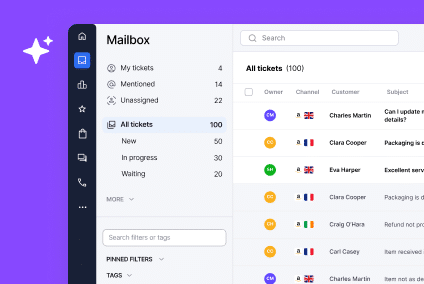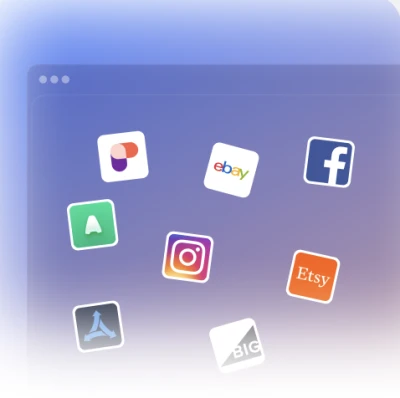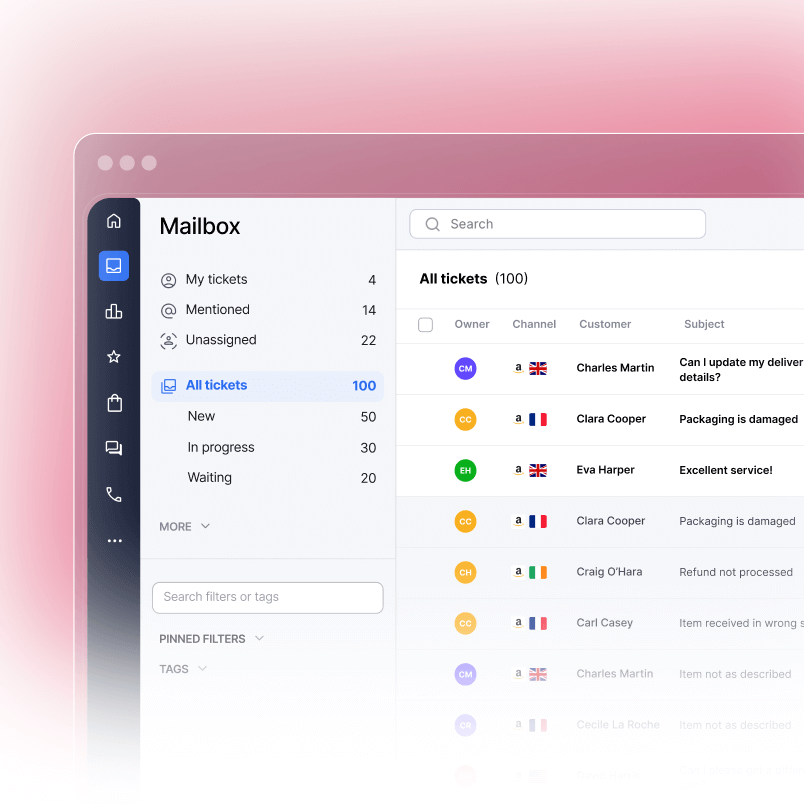With Cyber Monday 2025 expected to reach $13.3 billion in online sales and Black Friday projected to hit $10.8 billion, preparation is crucial for eCommerce success. This comprehensive Cyber Monday cheat sheet provides actionable strategies to maximize your sales during the biggest shopping weekend of the year.
1. Optimize Your Product Listings
Titles: Include high-value keywords to enhance search visibility
- Research Black Friday and Cyber Monday-specific keywords
- Use tools like Google Trends to identify trending search terms
- Include seasonal terms like “Black Friday deals” and “Cyber Monday specials”
Descriptions: Highlight unique selling points and benefits, focusing on holiday-specific promotions
- Emphasize urgency with limited-time offers
- Showcase value propositions clearly
- Include gift-giving language for holiday shoppers
Images: Use high-quality images; consider festive themes or overlays to attract seasonal buyers
- Add “SALE” or “LIMITED TIME” badges to product images
- Create holiday-themed graphics and banners
- Ensure mobile optimization since 79% of Cyber Week traffic comes from mobile devices
2. Set Up Special Deals & Promotions
Discounts: Offer limited-time discounts to create urgency
- Plan tiered discounts: 20% off one item, 30% off two items, 40% off three or more
- Create flash sales with countdown timers
- Use psychological pricing strategies
Bundles: Group popular products together to increase cart value
- Create gift bundles perfect for holiday shopping
- Offer complementary product packages
- Use Cyber Monday cheat sheet software to track bundle performance
Free Shipping: Provide free shipping on orders over a certain amount to encourage larger purchases
- 67% of shoppers won’t purchase without free shipping
- 84% will add more items to their cart to qualify for free shipping
- Consider offering expedited shipping for last-minute shoppers
3. Streamline Customer Support with eDesk
Quick Replies: Use templates to respond to FAQs and handle high volumes of inquiries
- Prepare responses for common Black Friday questions
- Set up automated responses for order status inquiries
- Create holiday-specific FAQ sections
Automation: Set up auto-responses for common questions and order tracking to save time
- Implement AI-powered chatbots for instant support
- Use Cyber Monday cheat sheet tools for automated customer communication
- Set up triggered responses based on customer behavior
Unified Inbox: Manage all customer messages from Amazon, eBay, Shopify, and other platforms in one place for efficiency
- Centralize communications across all sales channels
- Monitor response times and maintain SLA standards
- Ensure 24/7 coverage during peak shopping hours
4. Prepare for Returns & Refunds
Return Policy: Clearly display your holiday return policy to avoid confusion
- Extend return periods for holiday purchases
- Create clear, customer-friendly return instructions
- Communicate policies prominently on product pages
Pre-written Responses: Set up clear, friendly responses for return and refund inquiries
- Develop templates for common return scenarios
- Include step-by-step return instructions
- Maintain an empathetic and helpful tone
Escalation Plan: Identify and resolve potential issues quickly to maintain positive reviews
- Create priority queues for urgent issues
- Train your support team on holiday-specific policies
- Monitor social media for customer service issues
5. Monitor & Manage Reviews
Feedback Requests: Use eDesk’s tools to request feedback post-purchase
- Send automated review requests 7-14 days after delivery
- Incentivize reviews with small discounts on future purchases
- Time requests strategically to avoid holiday rush periods
Address Negative Reviews: Respond quickly and professionally to resolve issues and maintain a positive seller rating
- Respond to negative reviews within 24 hours
- Offer solutions publicly and follow up privately
- Use feedback to improve products and services
6. Manage Inventory & Forecast Demand
Stock Up: Make sure you have adequate stock for top-selling products to avoid stockouts
- Analyze previous years’ Black Friday sheet deals performance
- Use AI-powered demand forecasting tools
- Maintain a 20-30% buffer stock for bestsellers
Inventory Tracking: Use eDesk’s integration to track inventory across platforms
- Implement real-time inventory management systems
- Set up low-stock alerts and automatic reorder points
- Monitor inventory levels across all sales channels
Forecasting Tools: Use data from previous holiday seasons to forecast demand accurately
- Leverage historical sales data and trends
- Consider economic factors affecting consumer spending
- Plan for supply chain disruptions and delays
7. Maximize Your Marketing Efforts
Email Campaigns: Create targeted holiday campaigns highlighting exclusive deals
- Start email campaigns at least one week before Black Friday
- Segment audiences based on purchase history and preferences
- Create urgency with countdown timers and limited quantities
Social Media: Boost posts showcasing limited-time offers and promote directly to followers
- Use social commerce features on Instagram and Facebook
- Create shareable content with holiday themes
- Leverage user-generated content and customer testimonials
Retargeting Ads: Remind past visitors about your products with retargeting ads
- Set up pixel tracking for website visitors
- Create dynamic product ads showing previously viewed items
- Increase ad spend during peak shopping hours (8 PM to 10 PM)
8. Set Realistic Shipping Expectations
Update Delivery Times: Display realistic delivery dates, considering the holiday rush
- Account for increased processing and shipping times
- Communicate cutoff dates for holiday delivery
- Offer expedited shipping options
Shipping Options: Offer expedited shipping for last-minute shoppers
- Partner with multiple carriers to ensure capacity
- Provide real-time shipping calculations
- Consider local delivery options in major markets
Communicate Delays: Proactively update customers about any potential shipping delays
- Send automated shipping updates and tracking information
- Provide customer service contact information
- Offer compensation for significant delays
9. Optimize for Mobile Commerce (New for 2025)
Mobile-First Design: Ensure your site performs excellently on mobile devices
- 79% of Cyber Week eCommerce traffic comes from mobile phones
- Optimize the checkout process for mobile users
- Implement one-click purchasing options
Page Speed: Improve mobile loading times for better conversion rates
- Sites loading within 1 second convert 2.5x more than those loading in 5 seconds
- Compress images and optimize code
- Use content delivery networks (CDNs)
Mobile Payment Options: Integrate popular mobile payment solutions
- Accept Apple Pay, Google Pay, and other digital wallets
- Implement Buy Now, Pay Later (BNPL) options
- Ensure a secure and seamless checkout experience
10. Leverage AI and Automation (New for 2025)
AI-Powered Personalization: Use artificial intelligence to deliver personalized shopping experiences
- AI influenced $51 billion in Cyber Week sales in 2023
- Implement product recommendation engines
- Personalize email content based on browsing behavior
Chatbot Integration: Deploy AI chatbots for instant customer support
- Handle 80% of routine customer inquiries automatically
- Provide 24/7 support during peak shopping periods
- Integrate with your Cyber Monday cheat sheet tools for seamless operations
Automated Campaigns: Set up automated marketing campaigns based on customer behavior
- Trigger abandoned cart recovery emails
- Send personalized product recommendations
- Automate post-purchase follow-up sequences
Pro Tips for BFCM 2025 Success
Start Early: Begin planning at least 8-12 weeks before Black Friday
- 50% of US consumers begin holiday shopping in October
- Test your systems and processes well in advance
- Build anticipation with pre-Black Friday campaigns
Analytics and Tracking: Use eDesk’s analytics to track customer inquiries and feedback throughout Black Friday and Cyber Monday
- Monitor key performance indicators (KPIs) in real-time
- Track conversion rates, average order value, and customer satisfaction
- Analyze data to identify areas for improvement
Cross-Selling and Upselling: Maximize revenue per customer
- Suggest complementary products during checkout
- Create holiday gift bundles and packages
- Use “Frequently Bought Together” recommendations
Supply Chain Coordination: Ensure your suppliers are ready for increased demand
- Confirm inventory availability with suppliers
- Have backup suppliers identified
- Plan for potential shipping delays and bottlenecks
Team Preparation: Ensure your team is ready for the increased workload
- Schedule additional customer service coverage
- Train staff on holiday policies and procedures
- Create clear escalation procedures for complex issues
Key Dates for BFCM 2025
- Black Friday: November 28, 2025
- Small Business Saturday: November 30, 2025
- Cyber Monday: December 1, 2025
- Last shipping day for Christmas delivery: Typically December 15-20 (varies by carrier)
Remember, this Black Friday cheat sheet 2023 approach has evolved significantly. In 2025, successful eCommerce sellers focus on omnichannel experiences, AI-powered personalization, and mobile-first strategies to capture their share of the projected $298 billion in Cyber Week global sales.
For comprehensive customer support during BFCM, explore eDesk’s specialized solutions for eCommerce customer service, Amazon seller support, and multichannel customer management to ensure exceptional customer experiences during the busiest shopping weekend of the year.
Book a free demo today to learn more about how eDesk can optimize your BFCM performance.




